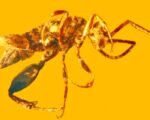FORT WAYNE, Ind. – The Fort Wayne Children’s Zoo is stepping up its defense against avian influenza as the virus continues to spread across Indiana’s farms and wildlife. With an extensive response plan in place, the zoo is implementing strict biosecurity measures to protect its bird population and other susceptible animals.
A Plan Years in the Making
The Fort Wayne Zoo has not been caught off guard. Officials say their Avian Influenza Response Plan, established in 2022, lays out specific actions to mitigate the risk of bird flu among the zoo’s inhabitants.
The plan isn’t just a set of guidelines—it’s a daily protocol. Employees follow strict routines to ensure hygiene standards remain top-notch, minimizing any chance of contamination. Staff members undergo continuous training to reinforce safety measures, ensuring everyone is well-prepared.

Tightened Biosecurity Measures
Zoo officials have implemented multiple layers of protection to prevent the virus from reaching their animals. Key steps include:
- Employees must wear proper personal protective equipment (PPE) when handling animals.
- Equipment is thoroughly sterilized after every use to prevent contamination.
- Food supplies undergo rigorous quality checks before reaching the enclosures.
- Strict hygiene protocols are enforced, including handwashing and disinfection procedures.
These steps aim to ensure that no potential carriers of the virus—whether human, equipment, or feed—come into contact with the zoo’s birds and other susceptible species.
Birds Relocated Indoors for Safety
One of the most visible changes for visitors is the absence of birds in outdoor enclosures. To minimize exposure to wild birds that could be carrying the H5N1 strain, the zoo has moved its birds into indoor habitats. Officials say this step not only shields them from the virus but also protects them from the frigid winter temperatures.
Zoo staff monitor the health of the birds daily, conducting routine screenings to detect any possible infections. So far, all test results for H5N1 have come back negative, providing a sense of relief but not a reason to lower their guard.
The Bigger Picture: Indiana’s Bird Flu Situation
Indiana has been grappling with bird flu outbreaks in both domestic and wild bird populations. The state’s Board of Animal Health has been tracking the spread, with farms and wildlife areas reporting infections. While the Fort Wayne Zoo remains unaffected, officials acknowledge that vigilance is key to keeping it that way.
The impact of bird flu extends beyond zoos and farms. Poultry industries have suffered losses, and wildlife agencies have been on high alert. The situation is fluid, with state veterinarians continuously assessing risks and updating recommendations.
Monitoring and Future Preparedness
Zoo officials say they are closely following state and national guidelines to ensure their measures remain effective. Their approach includes:
- Regular consultations with veterinarians and animal health experts.
- Participation in statewide disease monitoring efforts.
- Continued training for staff to handle emerging biosecurity threats.
The Fort Wayne Zoo’s proactive steps underscore its commitment to animal welfare. While bird flu remains a looming threat, the zoo is determined to keep its animals safe and healthy through strict protocols and constant vigilance.













